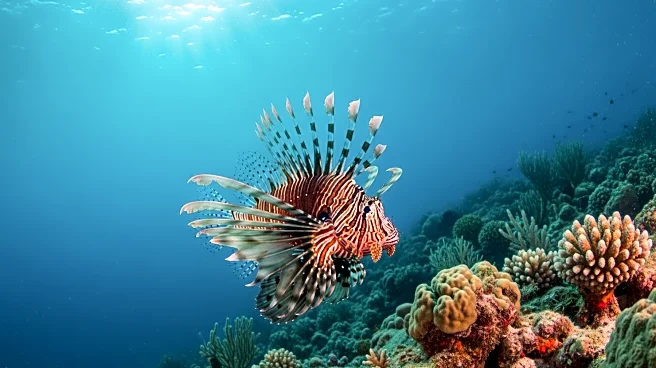What's Happening?
Lionfish, an invasive species in the Gulf of Mexico, are causing significant ecological and economic concerns in Texas. Known as the 'feral hogs of the sea,' lionfish consume large quantities of native marine species, including commercially important
fish like red snapper, tuna, and shrimp. This predation has led to an 85% reduction in biomass in affected reefs, highlighting the severity of the threat. The presence of lionfish disrupts marine ecosystems and poses challenges for the fishing industry, which relies on healthy fish populations for economic stability.
Why It's Important?
The lionfish invasion has far-reaching implications for the Gulf's marine biodiversity and the economic well-being of Texas's fishing industry. The decline in native fish populations affects commercial fishing operations, potentially leading to reduced catches and financial losses. Efforts to control the lionfish population are crucial to preserving the ecological balance and supporting the livelihoods of those dependent on the Gulf's resources. The situation underscores the importance of addressing invasive species and implementing effective management strategies to protect natural habitats and economic interests.
What's Next?
Efforts to mitigate the impact of lionfish are ongoing, with initiatives aimed at controlling their population and restoring affected ecosystems. Researchers and conservationists are exploring methods to reduce lionfish numbers, including targeted fishing and public awareness campaigns. The fishing industry may need to adapt to changing conditions by diversifying catch strategies and investing in sustainable practices. Collaboration between government agencies, scientists, and local communities will be essential in developing effective solutions to combat the lionfish threat.
Beyond the Headlines
The lionfish invasion highlights broader environmental challenges related to invasive species and ecosystem management. The situation serves as a reminder of the delicate balance within marine environments and the potential consequences of human activities that disrupt this balance. Addressing the lionfish problem requires a comprehensive approach that considers ecological, economic, and social factors, emphasizing the need for integrated conservation efforts.

















